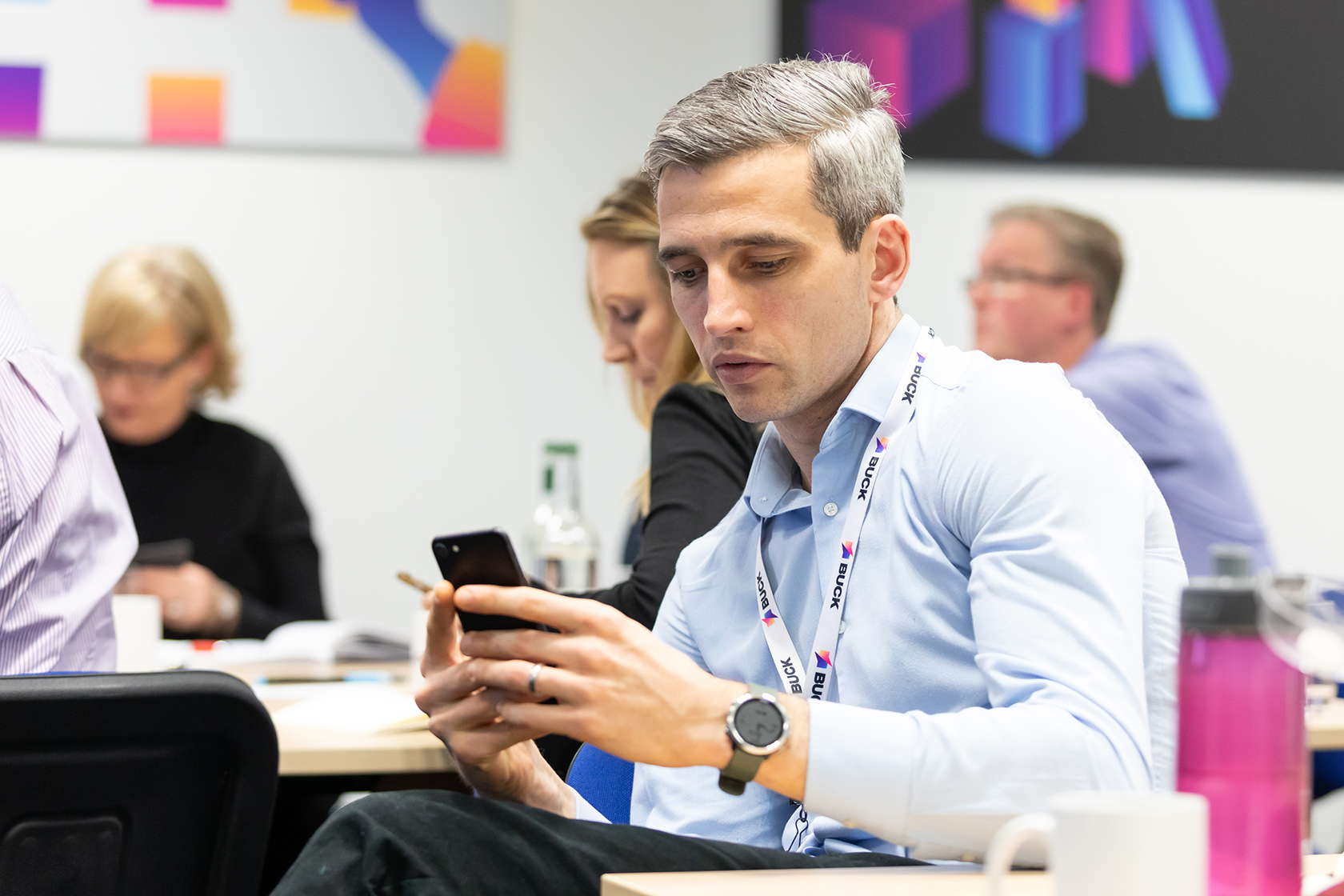Open enrollment is a perfect time to showcase the value of the benefits you offer employees. Once they see the value of the rewards you offer, people become more engaged, more satisfied with their work and how it aligns with the firm’s objectives, and more open to adopting new programs, policies, and procedures.
But communicating information about benefits shouldn’t be limited to the open enrollment (OE) period each year. Benefits only have true value when employees need to use them, so support should be ongoing to help individuals use their benefits.
The surveys we conduct often reveal employees have some confidence when making their selections during open enrollment, but less so when actually using their benefits. As a result, at least one of our clients has positioned their total benefits offering in a “moments that matter” framework, to connect people to the support they need when they need it — often beyond the open enrollment window.
Boost employees’ confidence in using benefits year round.
When it comes to benefits communication, employees often face barriers in understanding how to access and use their benefits when they need them. It can be intimidating to know where to start, and general “life overload” and preferences for receiving information can all combine to cause employees to become frustrated.
To help employees, organizations need to ensure easy access to trusted information and help not just during the open enrollment time period. Using multiple channels like texting, chatbots, apps, brief podcasts and entertaining videos are great for promoting benefits more widely and effectively. People use these channels in their everyday lives and expect to receive information in a variety of ways. Mixing online media with good old-fashioned print media like postcards that direct employees to your digital channels for more information can also grab attention.
Chatbots are a good example of using technology to help users more easily find what they’re looking for. It may be challenging for people to remember all the specific benefits available, but they can remember: my employer provides many benefits and the chatbot is a tool that can point me directly to where I can get the help I need when I need it. The chatbot can reside on a general benefits website, accessible to employees and their families, and connect people to your other digital channels as needed.
It’s important to remember that whether they work at home or in the workplace, we know employees are bombarded with all kinds of messages. Remember to use an attention-getting headline and graphics, otherwise your message may never be read.
By developing an optimal mix of high-tech and high-touch channels, you can make sure your messages really stand out. You can’t reach everyone with a one-size-fits-all approach.
Get personal.
When done right, benefits communication can align your rewards package with your corporate identity, and strengthen workplace culture. But employers also need to understand and speak to the identities and needs of their employees. Personalized communication, born of aggregated personal information and built on supporting personas can help your messages speak to “people like me.” Individual “to do” lists and modeling capabilities can also help people figure out the solutions that are right for them.
The employer-employee relationship is an evolving one, bringing with it the need to recognize individuals more inclusively. Creating communications that incorporate diverse images and personas, use inclusive language (e.g., person-first versus identify-first), and are translated into multiple languages when appropriate, can help to keep your benefits information targeted and relevant to the many specific groups in the organization.
Don’t forget the human touch.
Studies show people value enrollment meetings, benefits fairs and especially manager communications. When we are out listening to employees, we often hear “If it’s important, my manager should tell me.”
Some companies may have swung the pendulum a little too far when it comes to online self-service, especially for benefits that are complicated and a workforce that’s tired and stressed. Managers don’t need to become benefit experts but can understand and communicate the basics through well-crafted talking points, including communicating the support that is available through the employer for more information and one-on-one help. Organizations may wish to outsource enrollment sessions and/or one-on-one enrollment support conversations that can provide an important human touch.
Keep up the momentum.
There are reasons to extend your benefits communication beyond the OE window. It’s often challenging for people to understand how to use their benefits and sometimes employees may not even recall which benefits they have. Providing and communicating your resources throughout the year is a far more effective way to build a deep, long-lasting “value proposition” for employees.
Think about how often your favorite brands touch you via advertising – that’s what you’re competing with. Research shows that we need to hear a message at least 7 times to take action. That’s why keeping up the momentum is critical for your messages to be heard, considered, appreciated, and acted upon.
From plan design to vendor selection to ongoing education campaigns, we’ll guide you and your people through the annual enrollment process. Learn more here.
